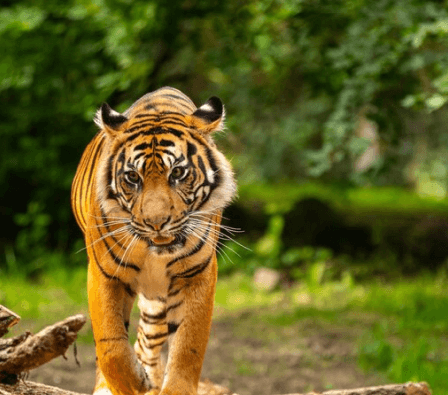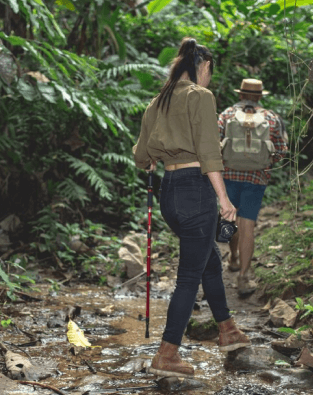History and Overview of Sakleshpur
Sakleshpur is often called the “Switzerland of Karnataka” for its rolling, mist-clad hills and picturesque views. Perched about 950 meters above sea level in the Western Ghats, this hill town enjoys pleasant weather year-round.
It lies in Karnataka’s Hassan district (around 220 km from Bengaluru) and is enveloped by dense forests, sparkling rivers, and thriving coffee, cardamom, pepper, and areca nut plantations – truly a haven for nature lovers and trekkers.
Historically, Sakleshpur was part of the ancient Hoysala Kingdom and still bears traces of that era in and around its vicinity. In fact, the town’s name is believed to have originated from “Sakala Aishwarya Pura” meaning “the place of all wealth” – referring to its bountiful natural riches and fertility.
Later, during the 18th century, Mysore’s ruler Tipu Sultan fortified this region by building the star-shaped Manjarabad Fort, a key military outpost to guard against British invasion.
Today, Sakleshpur seamlessly blends heritage and nature. You can explore centuries-old temples and colonial-era churches one day, and trek through biodiversity hotspots in the rainforest the next.
The surrounding Western Ghats are recognized as one of the 18 global biodiversity hotspots, harboring rare flora and fauna amid the sub-tropical climate and heavy monsoon rains.
Whether you’re a history buff, an adventure seeker, or simply looking to unwind amidst coffee-scented hills, Sakleshpur offers a bit of everything.
In the sections below, discover the best places to visit in Sakleshpur, top activities (things to do), recommended hotels, travel tips on reaching Sakleshpur, and when to plan your visit for the best experience.
Places to Visit in Sakleshpur
Sakleshpur packs a wealth of attractions – from historic forts and temples to breathtaking viewpoints and waterfalls. Here are the top places to add to your Sakleshpur sightseeing itinerary:
1. Manjarabad Fort – Tipu’s Star-Shaped Fortress
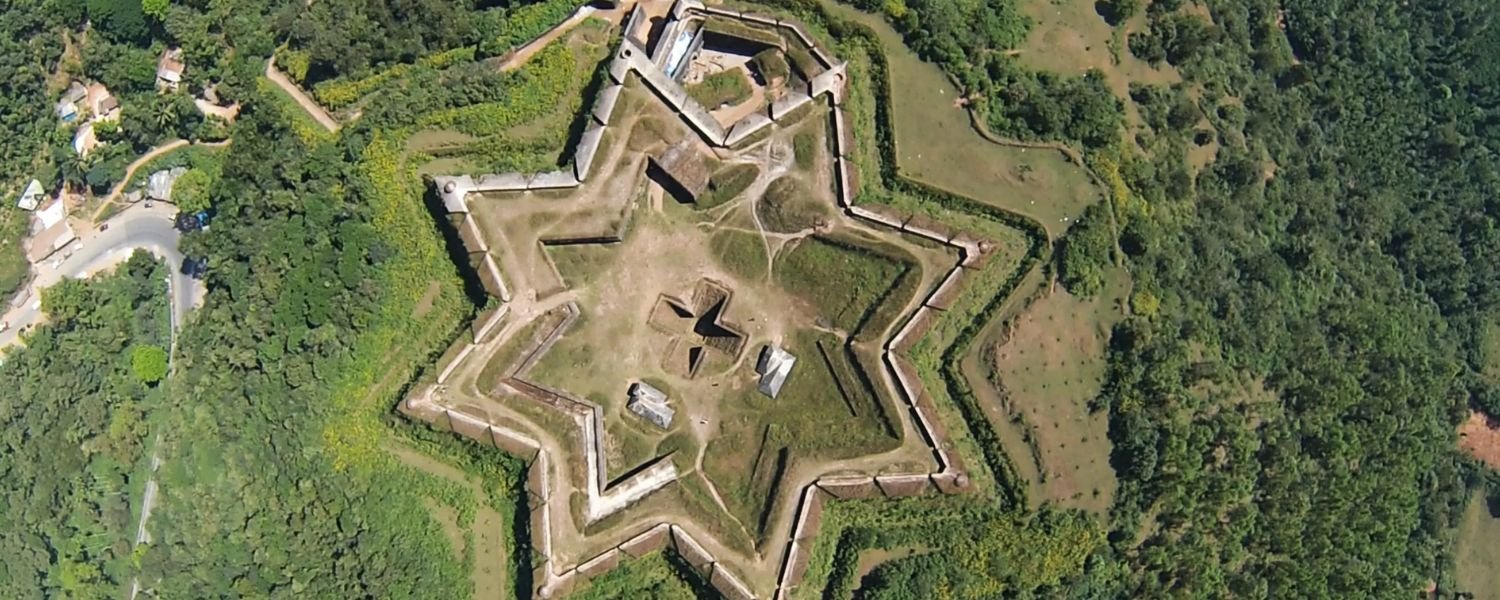
One of Sakleshpur’s must-see landmarks is the Manjarabad Fort, famed for its unique star-shaped design. Built in 1792 by Tipu Sultan, the fort was strategically created as an armory and lookout point atop a hill.
Its octagonal (eight-pointed star) layout provided a defensive advantage against British forces and still stands testament to brilliant military architecture. A short uphill walk leads you to the fort’s ramparts, from where you can enjoy panoramic views of the Western Ghats and the green valleys below.
On a clear day, the sight of cloud-kissed mountains stretching to the horizon is breathtaking. Inside, you’ll find remnants of barracks, chambers, musket holes and even a tunnel (locals say it once connected to Tipu’s Srirangapatna fort).
For history enthusiasts and photographers, Manjarabad Fort is a highlight of Sakleshpur sightseeing – merging local lore with natural grandeur. (Tip: Visit in the early morning or late afternoon for cooler weather and golden light for photos.)
2. Sakleshwara Temple – Ancient Shiva Temple on the Riverside
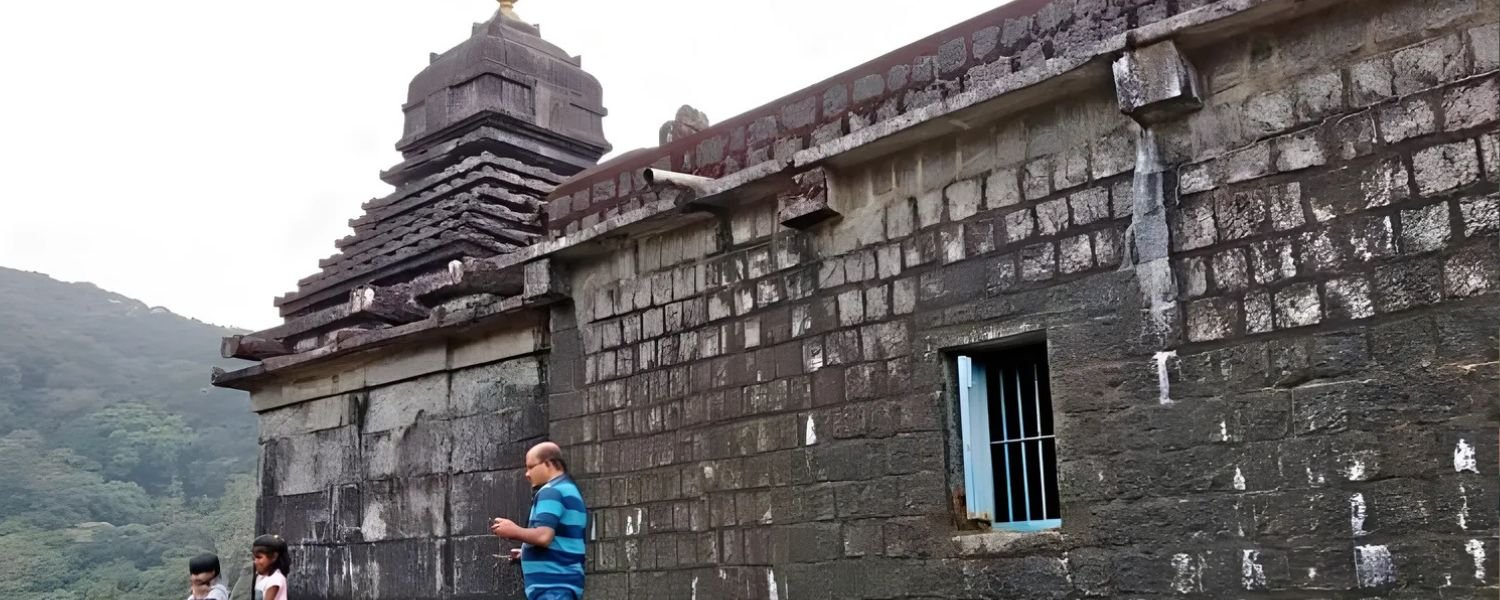
Located at the entrance of the town by the Hemavathi River, Sri Sakleshwara Swamy Temple is a beautiful 12th-century temple dedicated to Lord Shiva. It is one of the oldest temples in the region and a significant cultural attraction in Sakleshpur.
The temple showcases classic Hoysala-era architecture with intricate carvings on its stone walls, although it is more modest in scale compared to the grand temples of Belur and Halebid.
Devotees and visitors alike are drawn to its spiritual ambiance – especially during the annual Rath Yatra (chariot festival) held every February, which brings the town alive with ceremonies and pilgrim crowds.
The Hemavathi River flows peacefully beside the temple, adding to the serenity of the location. You can sit on the ghats (steps) by the river after offering prayers, soaking in the tranquil atmosphere.
Sakleshwara Temple is not only a place of worship but also a testament to Sakleshpur’s rich heritage – a stop here offers a mix of spirituality, history, and scenic beauty in one go.
3. Bisle Viewpoint – Spectacular Vistas of the Western Ghats

If jaw-dropping natural scenery is what you seek, head to the Bisle Viewpoint. About 30–35 km from Sakleshpur, this viewpoint is perched on the edge of the Bisle Reserve Forest, a dense rainforest teeming with biodiversity.
From here, you can gaze upon the meeting point of three mountain ranges – the Dodda Betta and Pushpagiri ranges, and Kumaraparvatha (part of the Kumaradhara River valley).
On a clear day, the view seems straight out of a postcard: layers of forested hills, deep valleys, and if you’re lucky, a glimpse of wild elephants or deer in the distant hills.
The viewpoint area has a small shelter and railing for safety, and it truly offers one of the best panoramas in Karnataka. Bisle is often shrouded in mist in the early mornings, but as the sun clears the fog, the Western Ghats unfold in all their glory.
Getting to Bisle involves a scenic but bumpy drive – the last stretch of road is a bit rough (an adventure in itself!) and winds through thick foliage. Travel tip: try to visit during or right after monsoon (June to October) when the forest is lush green and streams are flowing – the viewpoint will reward you with a verdant vista and cool, misty weather.
Bisle Viewpoint is a favorite among nature photographers and is often listed as one of the top things to do in Sakleshpur for its raw, untouched beauty.
4. Agni Gudda Hill (Agni Betta) – Trek to the “Fiery Mountain”
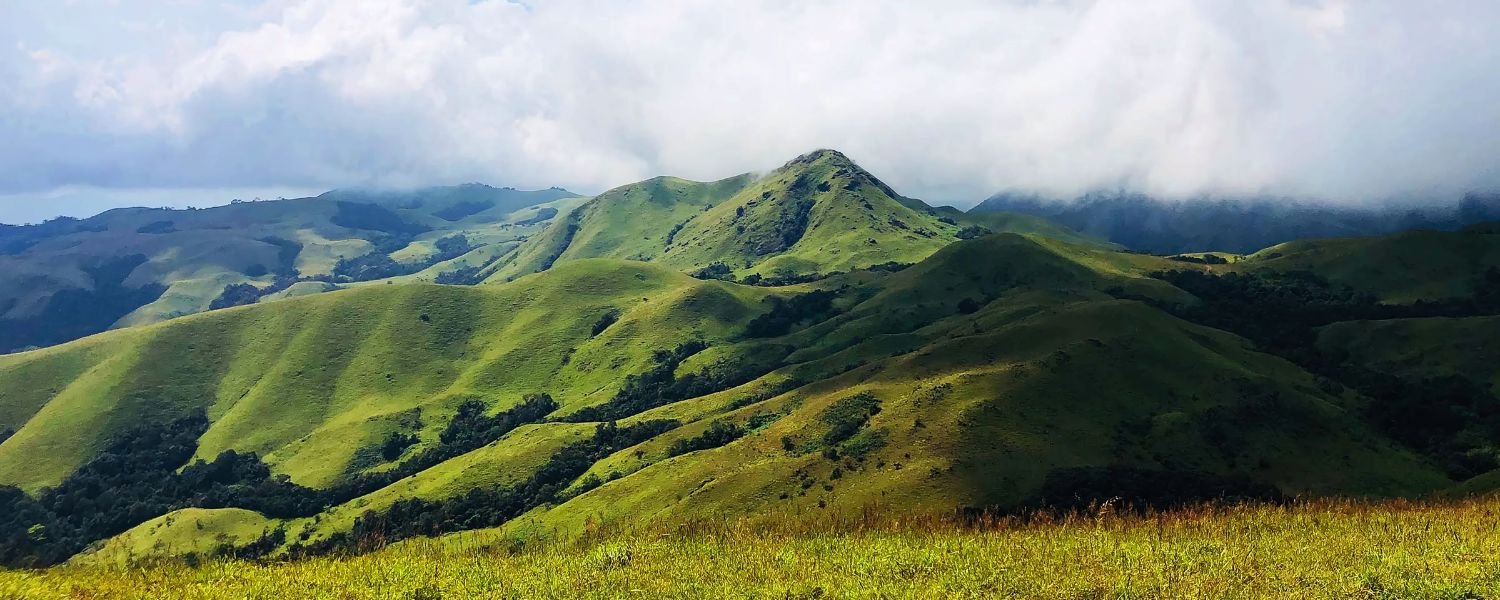
For trekking enthusiasts, Agni Gudda (meaning “Fiery Hill”) is a thrilling destination. Located about 35 km from Sakleshpur, Agni Gudda offers a moderately challenging hike through grasslands and rocky terrain. Don’t worry – the hill isn’t a volcano; the name likely comes from the reddish soil or the sun’s glow on the hill at certain times.
The trek is roughly 3–4 km one way, taking about an hour to ascend at a steady pace. As you climb, you’ll pass through lush green hill slopes and open plateaus often used for picnics. The views from the top are absolutely worth the effort – an expansive 360-degree view of rolling hills, patchwork valleys, and distant villages.
Thanks to minimal light pollution, camping overnight on Agni Gudda is popular; on clear nights you’ll witness a sky full of stars and perhaps the twinkling lights of Sakleshpur town far below.
If you decide to camp, carry your gear and essentials (and ensure you leave no trash behind). For a daytime visit, late afternoon is ideal to catch the sunset. Agni Gudda’s rugged charm and panoramic vistas make it one of the top adventurous things to do in Sakleshpur, beloved by hikers and nature lovers alike.
5. (Jenukallu Peak) – The Honey Stone Mountain
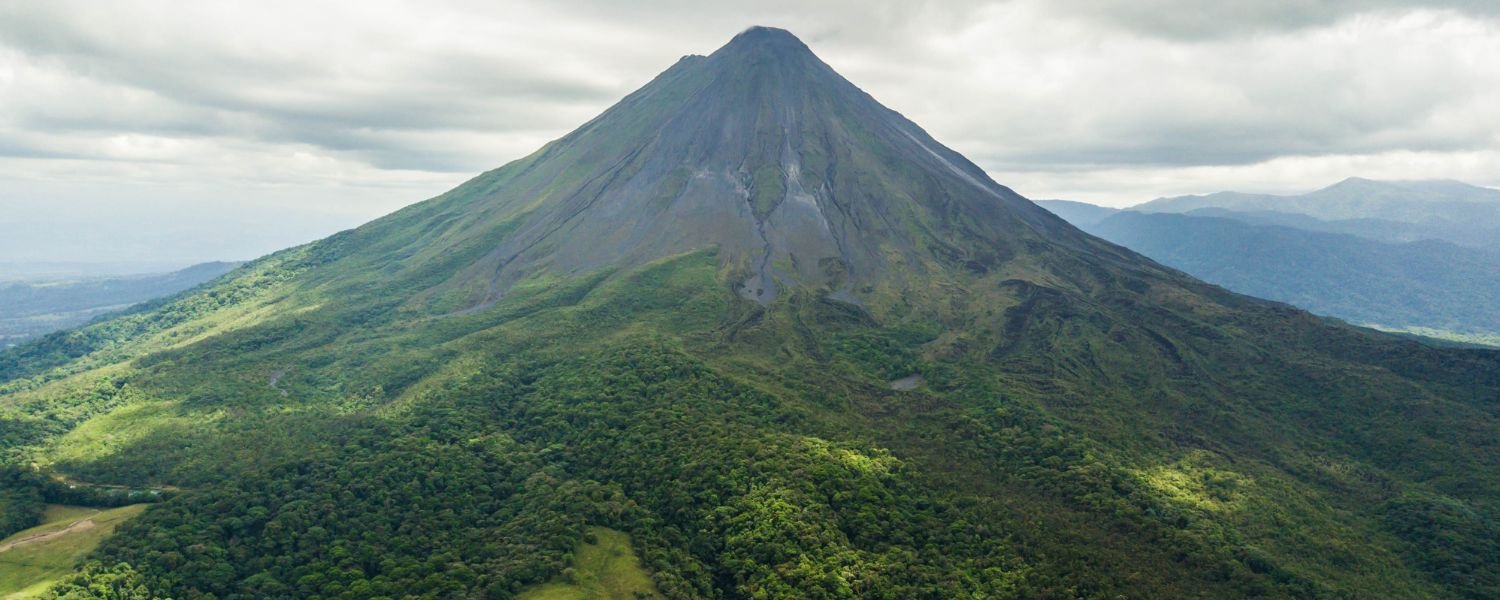
Standing as the second-highest peak in Karnataka, Jenukal Gudda (also called Jenukallu) is a must-visit for trekkers seeking a bit of challenge. “Jenukal” means Honey Stone, and locals sometimes refer to it as Honey Hill, owing to the honeycomb-like rocks or perhaps the presence of honeybee colonies in the area.
This peak lies about 40 km from Sakleshpur and about 8 km from the Betta Byraveshwara temple (often the base point for the trek). The trail to Jenukal Gudda is a moderate-to-strenuous 8 km trek that takes you through thick forests, coffee plantations, and grassy meadows.
As you approach the summit (elevation ~1,380 meters), the reward is incredible – panoramic views of the Western Ghats, often with clouds drifting below you. Trekking in the early morning to catch the sunrise is highly recommended; the sight of the sun emerging from a sea of clouds and illuminating the endless green ridges is unforgettable.
Sunset is equally magical on Jenukal, as the sky turns vivid colors over the misty valleys. Do note that weather can be unpredictable – mist can roll in suddenly – but that only adds to the mystique.
Jenukal Gudda’s breathtaking scenery firmly places it among the best places to visit in Sakleshpur for those willing to venture off the beaten path and literally reach new heights on their trip.
6. Pandavar Gudda & Betta Byraveshwara Temple – Mythology Meets Scenery
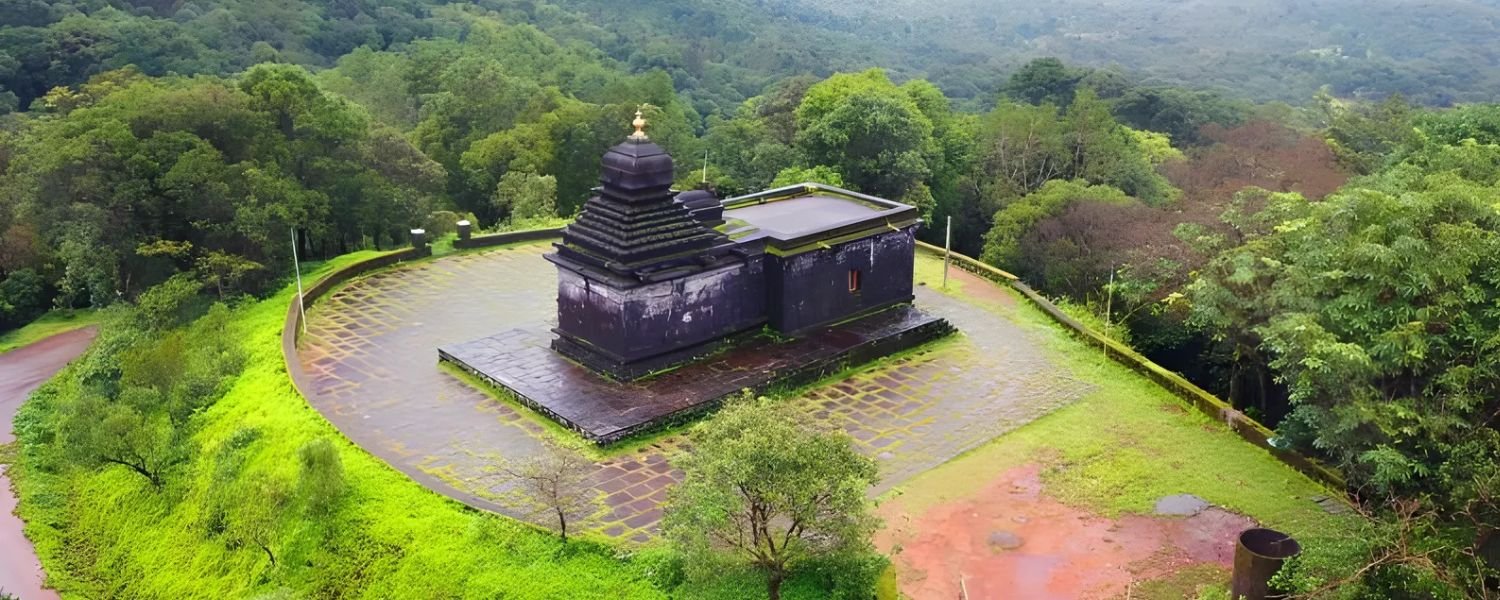
Pandavar Gudda is another scenic hill trek, intertwined with local legend. The name translates to “Hill of the Pandavas,” and it’s said that the five Pandava brothers from the epic Mahabharata spent a part of their exile in this region.
True or not, the hill today offers a lovely short trek culminating in some fantastic views and a dose of tranquility. Atop Pandavar Gudda is the Betta Byraveshwara Temple, a small centuries-old temple dedicated to Lord Shiva, which adds a spiritual charm to the place.
Many trekkers start their hike from the base of the hill (about 2 km trek) to reach the temple, often timing it to catch either sunrise or sunset from the summit – both are spectacular here. From the top, you get a sweeping outlook over the valleys, with patches of paddy fields, forests, and maybe even Jenukal Gudda in the distance.
The sunset in particular paints the sky in hues of orange and pink, making it a popular romantic spot as well. Pandavar Gudda is less crowded than other viewpoints, so you can enjoy some solitude.
It’s a perfect spot to sit by the temple, feel the cool breeze and reflect, making it a unique combination of nature and spirituality on your Sakleshpur itinerary. (Tip: The trail can be a bit overgrown in monsoon, so wear good shoes and carry some water. Also, respect the temple premises – remove shoes and keep the area clean.)
7. Manjehalli Waterfalls (Abbi Falls) – A Refreshing Nature Escape
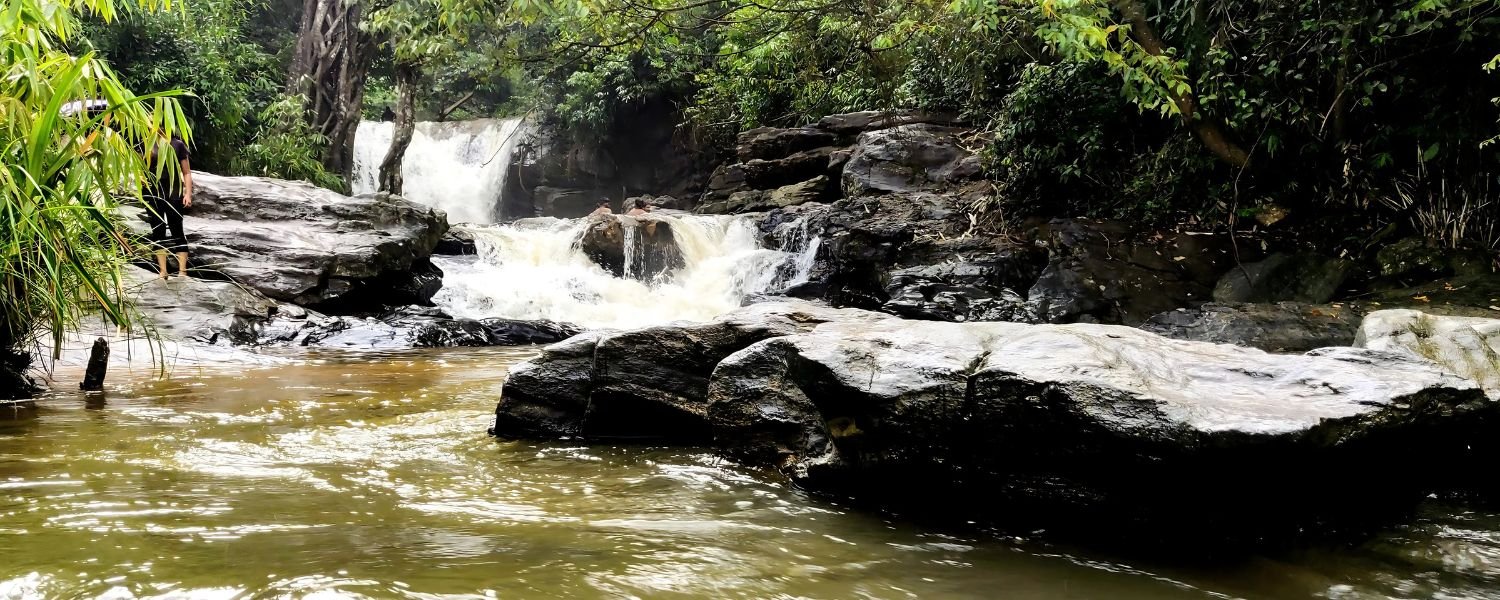
No trip to Sakleshpur is complete without experiencing at least one of its refreshing waterfalls, and Manjehalli Waterfalls (also known locally as Abbi Falls or Abby Falls) is the perfect choice. Located just ~6 km from Sakleshpur town, this waterfall is easily accessible by a short walk from the road and offers a rejuvenating sight.
Manjehalli is a seasonal waterfall, gushing to life during the monsoon months and tapering off in the dry season. During June to September, especially after heavy rains, the falls cascade down with full force, creating a misty aura around the rocks and pools – truly a sight to behold.
Visitors love to stand under the cool shower or take a quick dip in the natural pool at the base (exercise caution, as rocks can be slippery). Surrounded by dense greenery and pepper vines climbing up trees, the spot is incredibly photogenic and soothing.
It’s an ideal place for a small picnic or just to chill after a day of trekking. By late winter and summer (February through May), Manjehalli Falls might dwindle to a trickle or even dry up, so monsoon is the best time to visit for the full experience.
There is no entry fee; just park near the village and walk in. As you enjoy the waterfall, be mindful of plastic and carry back any trash – let’s keep this gem pristine for everyone!
8. Hadlu Waterfall (Murkannu Gudda Trek) – Offbeat Adventure in the Plantations

For those willing to venture a bit deeper into the wilderness, Hadlu Waterfalls offers an offbeat adventure. Tucked away in the coffee plantations and dense forests of the Murkannu Gudda region, Hadlu Falls is not as touristy, which means you might have this pretty cascade all to yourself (especially on weekdays).
The journey is half the fun – reaching Hadlu involves a trek of about 4 km (one way) through plantation trails and forest paths. The trail is part of the popular Murkannu Gudda trek, about 8 km round trip, which is cherished by nature enthusiasts for the variety of landscapes and the rewarding end point.
As you approach the waterfall, you’ll hear the sound of water gushing long before you see it. Hadlu is a multi-tiered falls, and you can carefully climb near the base to feel the spray. The water is icy cold (refreshing after the hike!) and is surrounded by big rocks where you can sit and soak in the scenery.
The entire area is rich in flora – giant ferns, wildflowers and, if you’re lucky, you might spot birds or butterflies unique to this habitat. The best part of this trek is the sense of discovery; unlike more frequented tourist spots, Hadlu feels like a hidden oasis.
As with all nature treks, go with a group or guide if possible, wear good trekking shoes, and start early to avoid afternoon heat. This waterfall trek is definitely for the adventurous souls looking to experience Sakleshpur’s raw beauty beyond the usual spots.
9. Hemavathi River & Gorur Dam – Tranquil Picnics and Sunsets
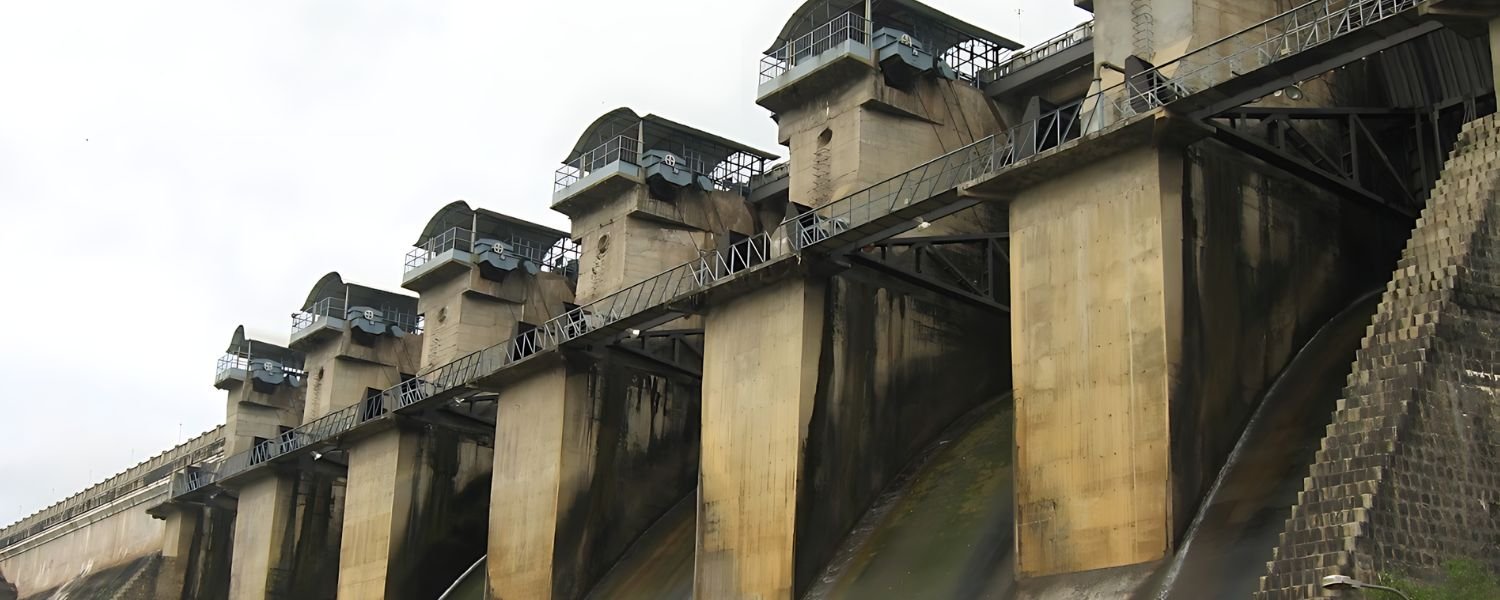
The Hemavathi River meanders through Sakleshpur and its surrounding valleys, offering serene spots to unwind by the water. One of the simple pleasures here is to take a leisurely nature walk along the riverbanks or organize a picnic on a pleasant day.
The river ensures the land stays fertile (hence the coffee and spice abundance) and also creates scenic picnic locales. A short drive from Sakleshpur town (around 25–30 km) takes you to the Hemavathi Reservoir (Gorur Dam).
This large dam is built across the Hemavathi and is known for its picturesque sunset views – as the evening sun dips, the sky reflects off the calm reservoir waters creating a golden mirror-like effect. It’s peaceful and less crowded, making it a lovely detour if you have an extra evening.
Bird-watchers will also enjoy this area, especially in winter, as migratory birds visit the reservoir. Keep in mind the dam’s viewing points might close by early evening for security, so plan to arrive a bit before sunset.
Whether you’re sitting by the Hemavathi River near town or at the dam site, the experience is calming – listening to water rippling and enjoying the breeze. It’s one of the best things to do in Sakleshpur for those looking to slow down the pace and simply connect with nature. Don’t forget to carry your camera; the landscapes here are postcard-worthy.
10. Coffee Plantation Tours – Aromatic Walks in the Hills
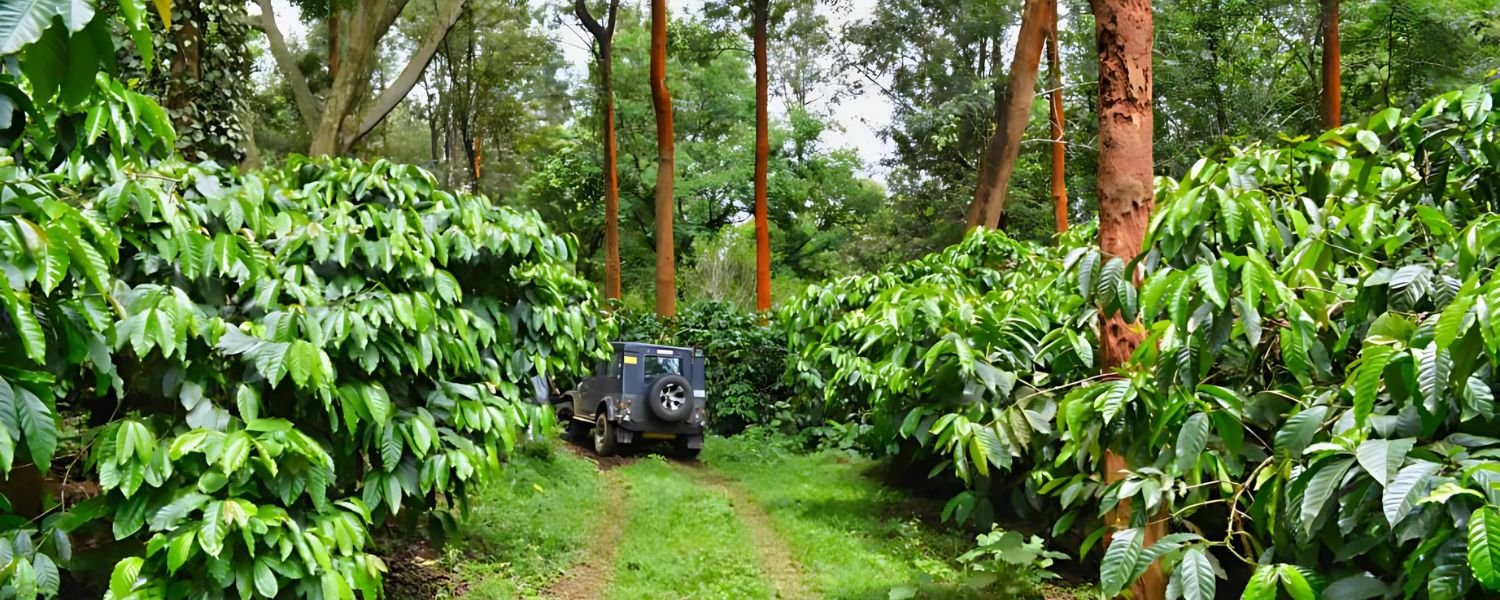
Sakleshpur is synonymous with coffee and spice plantations, and experiencing these plantations up close is a highlight for many travelers. Vast estates of coffee, interspersed with pepper vines climbing silver oak trees and cardamom shrubs lining the ground, are integral to Sakleshpur’s identity.
Many local plantation owners offer guided tours of their estates. On such a tour, you’ll learn about the journey of coffee – from berry to cup – as well as pepper, cardamom, and areca nut cultivation. Imagine walking under a canopy of tall jungle trees that provide shade for the coffee plants, inhaling the heady aroma of coffee blossoms or the earthy scent of spice – it’s a treat for the senses!
Some coffee estates like The Serai, Harley Estate, Raxidi Estate, and others even provide homestay or resort accommodations, allowing visitors to stay amid the plantations. Waking up to foggy mornings with the call of birds, sipping estate-grown coffee while overlooking plantations – that’s a quintessential Sakleshpur experience.
Plantation walks are usually easy and guided by a host who can share fascinating anecdotes about the region’s colonial planters, biodiversity (many estates are home to birds and even elephants passing through!), and the challenges of growing these crops.
Fun fact: The Western Ghats where Sakleshpur is located are one of the prime coffee-growing regions in India, thanks to the elevation and climate. Do take the opportunity to buy fresh coffee powder or spices from local farm outlets as a souvenir.
A plantation tour not only offers insight into local agriculture but also provides a peaceful nature walk – it’s both educational and incredibly relaxing. This is one “thing to do” in Sakleshpur that you should schedule between more strenuous sightseeing activities, as it beautifully slows down the pace.
11. Bonus – Other Attractions Around Sakleshpur

If you have more time or are willing to take short drives, there are several notable attractions near Sakleshpur that are worth visiting:
Shettihalli Rosary Church (40 km):
An abandoned 19th-century French church near Hassan, famous as the “Floating Church.” It gets partially submerged by reservoir backwaters in monsoon, creating an eerie, photogenic ruin.
The gothic arches of the stone church against open sky make for great photography, especially at sunset. (It’s about an hour’s drive from Sakleshpur, but a favorite detour for history and photography enthusiasts.)
Belur and Halebidu (50–60 km):
These towns are home to the magnificent Hoysala temples – Chennakeshava Temple in Belur and Hoysaleswara Temple in Halebidu – renowned for their intricate stone carvings depicting ancient Indian epics and daily life.
They are UNESCO World Heritage aspirants and showcase the pinnacle of Hoysala art and architecture. A half-day trip to these temples will leave you awestruck with their craftsmanship.
Wildlife Spotting & Trails:
Sakleshpur is close to the Pushpagiri Wildlife Sanctuary and Kukke Subramanya forests. If you’re an avid trekker, you might consider the Green Route Trek (railway trek from Sakleshpur towards Kukke Subramanya) which passes through tunnels, old railway bridges, and thick jungles – often called a trekker’s paradise.
(Note: Trekking on active railway lines is officially prohibited for safety, so ensure you go with a group or check current conditions.) For guided nature walks, you can inquire about trails in Bisle Reserve or even a guided bird-watching tour, as the region boasts many bird species.
With all these places to visit, you’ll likely find that Sakleshpur has far more to offer than one weekend can contain. Customize your itinerary based on whether you love history, nature, or adventure – there’s no shortage of options! Explore more: Unique Facts About Karnataka
Where to Stay in Sakleshpur (Best Hotels & Homestays)

After a day of exploring Sakleshpur’s attractions, you’ll want a comfortable place to relax. Luckily, Sakleshpur offers a wide range of accommodations to suit every budget and preference – from rustic homestays to luxury resorts. Here’s how to choose:
Coffee Estate Homestays & Eco-Resorts:
To truly soak in the local vibe, consider staying on a coffee plantation homestay or an eco-resort. Many are nestled in the midst of coffee and spice estates, offering an immersive nature experience.
You’ll wake up to misty hills and bird songs, enjoy home-cooked Malnad cuisine, and maybe even get to join plantation activities. For instance, Mekanagadde Homestay and Myst Homestay are popular budget-friendly homestays known for warm hospitality.
They are family-run, often with simple but cozy rooms and the invaluable charm of local hosts. Some homestays and resorts also pride themselves on being eco-friendly, using solar power, rainwater harvesting, and organic farming to give guests a sustainable stay.
Mid-Range Resorts and Hotels:
If you prefer more amenities while still being close to nature, Sakleshpur has several mid-range resorts. One noted example is Machaan Plantation Resort – a mid-range eco-resort set amid lush greenery.
These resorts typically offer individual cottages or villas, swimming pools, organized activities like guided treks or bonfires, and on-site restaurants serving local and multi-cuisine food. They strike a good balance between comfort and cost.
Another mid-range option is Mookanana Resort, known for its jungle vibes and coffee estate setting (great for families). Prices for mid-range stays can vary from around ₹4,000 to ₹8,000 per night depending on season and occupancy.
Luxury Resorts:
For those looking to splurge on a luxurious getaway, Sakleshpur won’t disappoint. The Serai Sakleshpur is one of the most renowned luxury resorts in the area – a 5-star plantation retreat set within a sprawling coffee estate.
Guests here enjoy villa-style accommodations, a private pool or jacuzzi, spa treatments, and fine dining using locally sourced ingredients. It’s perfect for honeymooners or anyone who wants to pamper themselves amidst nature.
Other high-end options include Eka Resort (romantic villas with panoramic views) and Wild Valley Farm Resort.
These properties often provide extras like guided nature walks, bird-watching, and indoor recreation. Nature meets comfort in these resorts – imagine sipping locally brewed coffee in an infinity pool overlooking the hills! Keep in mind luxury stays range roughly from ₹10,000–₹20,000 per night, and advance booking is essential, especially in peak season.
No matter where you stay, try to book in advance if you’re visiting during weekends or holidays in Oct–Feb, as Sakleshpur is a popular getaway and the best places fill up fast.
Booking ahead not only secures your spot but sometimes also fetches early-bird discounts. Also, consider the location of your stay: if you rely on public transport, staying in or near Sakleshpur town is convenient.
But if you have a car and crave solitude, opt for one of the estate stays a bit further out. Most hotels can arrange local sightseeing, but having your own vehicle or hired car will give you flexibility to cover all things to do in Sakleshpur at your own pace.
Tip: Weekday stays are generally quieter and may be cheaper. And if you’re a fan of camping, there are a few campsites (or even some resorts with camping options) around Sakleshpur where you can sleep under the stars, often near a river or hilltop.
How to Reach Sakleshpur
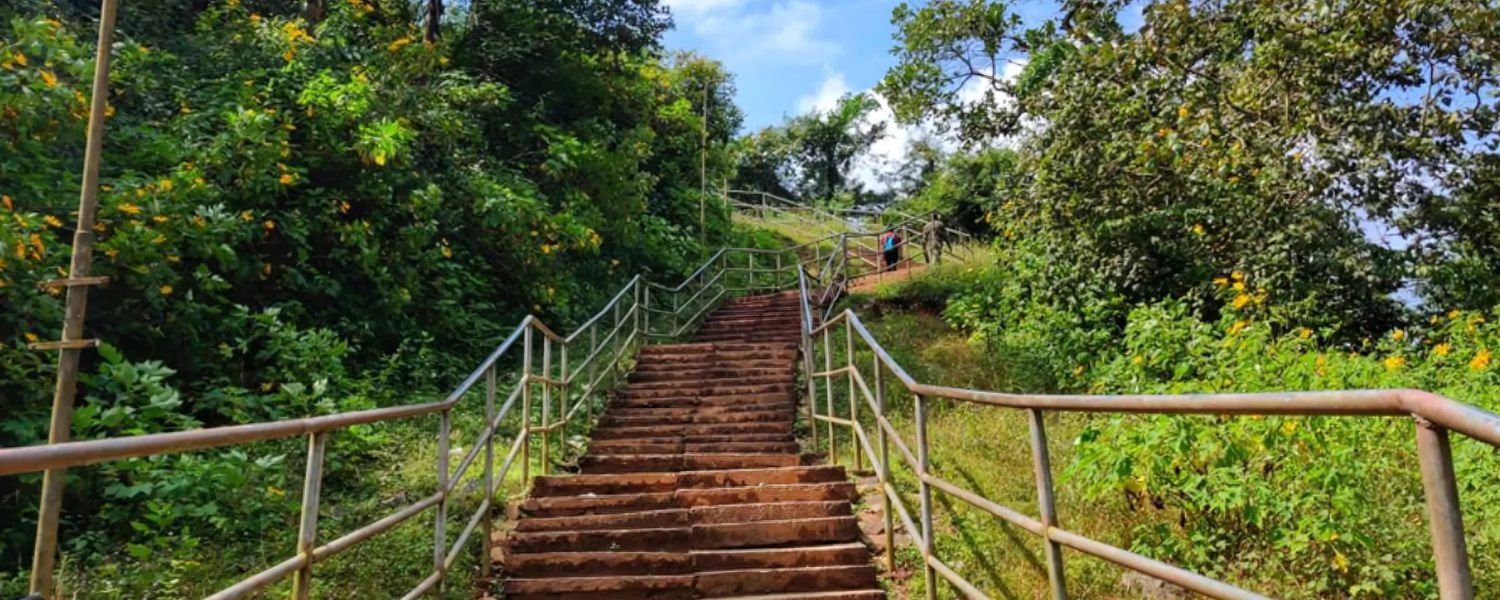
Despite being a tucked-away hill station, Sakleshpur is quite easy to reach thanks to its strategic location on the Bengaluru-Mangaluru (Bangalore-Mangalore) Highway. Here are the ways to get there:
By Road (Driving or Bus):
Sakleshpur lies on National Highway 75, approximately 220 km from Bengaluru. The drive takes about 4 to 5 hours by car, making it a favorite weekend road trip from Bangalore. The route (Bangalore → Nelamangala → Hassan → Sakleshpur) is scenic, especially as you enter Hassan district – expect views of paddy fields, coconut groves, and gradually ascending hills.
The highway is in good condition for most parts. From Mangaluru, Sakleshpur is about 130 km (roughly 3.5 hours) via NH75 from the opposite direction. If you’re coming from Mysuru (Mysore), the distance is ~170 km, routing via Hassan. For those not driving, regular buses (both government KSRTC and private operators) run from Bangalore and Mangalore to Sakleshpur.
There are Volvo AC as well as Karnataka Sarige (non-AC) buses; you can catch an overnight bus from Bangalore and reach by early morning. Buses and even trains from Bangalore typically pass through Hassan, so that’s another transit point.
Once in Sakleshpur town, local taxis (or auto-rickshaws for short distances) can take you to your hotel or sights. Driving Tip: Start early from Bangalore to beat city traffic, and you can consider a breakfast stop at Hassan which has decent eateries.
By Train:
Sakleshpur has its own railway station (code: SKLR), on the Bangalore–Mangalore railway line. There are a few trains from Bangalore that halt at Sakleshpur, including the Yesvantpur–Karwar Express and Kannur/Karwar Express (overnight trains) and some passenger trains.
The train journey is particularly beautiful as the track enters the Western Ghats – you’ll pass through tunnels, mountain curves, and bridges over valleys near Sakleshpur, offering a mini preview of the Green Route Trek. From Bangalore, the train journey is around 4.5 to 5 hours.
There are also trains from Mysore that connect to this line and go via Hassan to Sakleshpur. If coming from other parts of India, you might have to connect via Bangalore or Mangalore. Once you arrive at Sakleshpur station (which is just 1.5 km from the town center), you can take an auto or walk to many hotels if nearby.
Trains can be a comfortable and scenic way to reach, but do book in advance during holidays as the coaches can fill up with travelers and trekkers.
By Air:
Sakleshpur does not have its own airport, but you have two options for nearby airports. The closest is Mangalore International Airport (IXE), which is about 140 km away by road. Flights into Mangalore are available from major cities like Bangalore, Mumbai, Chennai, etc.
From Mangalore, you can hire a taxi (approximately 3–4 hours drive) or hop on a bus towards Sakleshpur/Hassan. The other major airport is Kempegowda International Airport, Bengaluru (BLR), about 250 km from Sakleshpur.
From Bangalore airport, you’d have to come into the city (or Nelamangala side) and then drive/bus it, which in total could be a 5-6 hour journey. If you’re an international traveler, flying into Bangalore and then taking a car to Sakleshpur might be the most straightforward.
Tip: If traveling in a group, consider hiring a cab from the Mangalore airport directly to Sakleshpur for convenience. Alternatively, you can travel to Hassan by train or bus from Bangalore, and then take a local bus for the last 40 km to Sakleshpur.
Once you’re in Sakleshpur, getting around is typically by private car, taxi, or auto-rickshaws. There is limited public transport within the town to tourist spots (a few buses to villages perhaps), so having your own vehicle or hiring a local cab for a day tour is recommended to cover the spread-out attractions.
Roads to major spots like Manjarabad Fort, temple, etc., are good, but those to deep countryside (Bisle, some waterfalls) can be rough – consider renting an SUV or taking local jeeps if available for those off-road stretches.
Best Time to Visit Sakleshpur
Sakleshpur is a year-round destination, but the best time to visit will depend on what you want to do and see:
Post-Monsoon & Winter (October to February):
This is widely regarded as the ideal time for Sakleshpur sightseeing. The rains subside by October, leaving behind lush green landscapes without the downpours. The weather from Oct to Feb is cool and pleasant – days are comfortably warm (20–28°C) and nights can get chilly (around 10–15°C in December-January).
This climate is perfect for trekking, outdoor activities, and coffee estate strolls. The hills are still green, waterfalls like Manjehalli might have moderate flow till November, and you can easily venture on trails without heavy showers. Winter also brings clear skies, offering great views from points like Bisle and Jenukal.
It’s also the time when Sakleshpur hosts some local festivals (for example, the annual car festival at Sakleshwara Temple in Feb). Do pack a light sweater or jacket for the nights and early mornings.
Since this is peak tourist season, make sure to book accommodation in advance. Overall, if your priority is enjoyable weather and all activities (treks, sightseeing) being accessible, October-February is the best time to visit Sakleshpur.
Monsoon (June to September):
If you’re a pluviophile (rain lover) or a nature photographer, the monsoon season in Sakleshpur is pure magic. The Western Ghats turn a hundred shades of green, rivers and streams overflow, and waterfalls are at their fullest.
July and August are the peak monsoon months with heavy rainfall – expect mists, lush vistas, and a fresh green carpet everywhere. It’s truly Sakleshpur in its most verdant avatar, often described as a “lush green paradise”.
However, consider the trade-offs: outdoor activities like long treks can be challenging in monsoon due to leeches, slippery paths, and occasional landslides in remote areas. The Bisle ghat road sometimes faces interruptions due to landslides in heavy rain.
That said, many people specifically visit during rain to enjoy the monsoon atmosphere – sipping hot coffee while gazing at misty hills, or doing short walks in light drizzle. If you plan a monsoon trip, come prepared with rain gear, anti-leech socks, and buffer days in case of any weather delays.
Drive cautiously on wet roads. Highlights of Monsoon: spectacular waterfalls (Mookanamane/Manjehalli Falls will be gushing), seasonal mushrooms and wildflowers pop up, and fewer tourists around. Monsoon travel is rewarding for the senses, as long as you’re comfortable with rain.
As one travel guide notes, heavy rains can indeed make trekking “a bit challenging and the roads can be slippery” – so choose this time if you’re okay with a little adventure with your scenery.
Summer (March to May):
Summer in Sakleshpur is mild compared to the plains of Karnataka. Being at an elevation, Sakleshpur’s summer temperatures typically range from about 20°C at night to 32°C in the daytime at most. March is actually quite pleasant as the greenery from the receded monsoon still lingers.
April and May get warmer in midday, but mornings and evenings remain comfortable (often with breezes). This season sees fewer tourists, so it’s a good time if you prefer quieter travel and budget deals on hotels. The downside is that many waterfalls dry up by late summer, and the scenery isn’t as lush – the foliage takes on more brownish tones awaiting the monsoon.
However, this is an excellent time for bird watching and exploring without crowds. You can do treks early in the morning, then relax during the hotter afternoon (maybe enjoy a pool if your hotel has one, or take a nap like the locals do!). Also, some local fruits like mangoes and jackfruits are abundant and cheap in summer – don’t miss tasting those.
If visiting in April-May, carry sun protection for midday and stay hydrated. Evenings can be spent enjoying cool breeze on a plantation porch or having a bonfire (some homestays arrange campfires even in summer nights, as it doesn’t get too hot).
In summary, while not the “peak” season, summer is still a decent time to visit Sakleshpur – you get clear skies (great for stargazing nights) and an easy-going vibe without the tourist buzz.
Conclusion: Every season in Sakleshpur has its charm. Winter (Oct-Feb) is perfect for a bit of everything – adventure and relaxation in ideal weather. Monsoon (Jun-Sep) is for the lovers of rain-drenched landscapes and dramatic scenery (just be ready for the rain gear).
Summer (Mar-May) offers a quiet escape and wallet-friendly trip with a mix of warm days and cool nights. Plan your visit according to your interests – but whenever you go, Sakleshpur’s natural beauty and cozy hospitality will leave you rejuvenated.
Conclusion
With its misty mountains, emerald plantations, historic relics, and cascading waterfalls, Sakleshpur is a slice of paradise in Karnataka that caters to travelers of all kinds.
This comprehensive guide has covered the top Sakleshpur sightseeing spots and things to do, along with practical tips on hotels, travel, and timing – now it’s time for you to experience it firsthand!
Picture yourself standing atop Manjarabad Fort as clouds roll by below, trekking through a rainforest to discover a hidden waterfall, or enjoying a freshly brewed cup of coffee while overlooking a valley – Sakleshpur offers all these unforgettable experiences.
So, pack your bags and get ready to explore the Switzerland of Karnataka on your next getaway. Don’t forget to carry your camera, a sense of adventure, and an appetite for local cuisine (do try the spicy Malnad-style dishes!).
Call to Action: Have you been to Sakleshpur or planning to? We’d love to hear your experiences and travel tips – feel free to share in the comments below.
If you found this guide helpful, share it with fellow travelers or friends planning a trip to the Western Ghats. Now, go ahead and plan that perfect Sakleshpur itinerary – an enriching and serene journey awaits amidst the hills! Happy travels!





